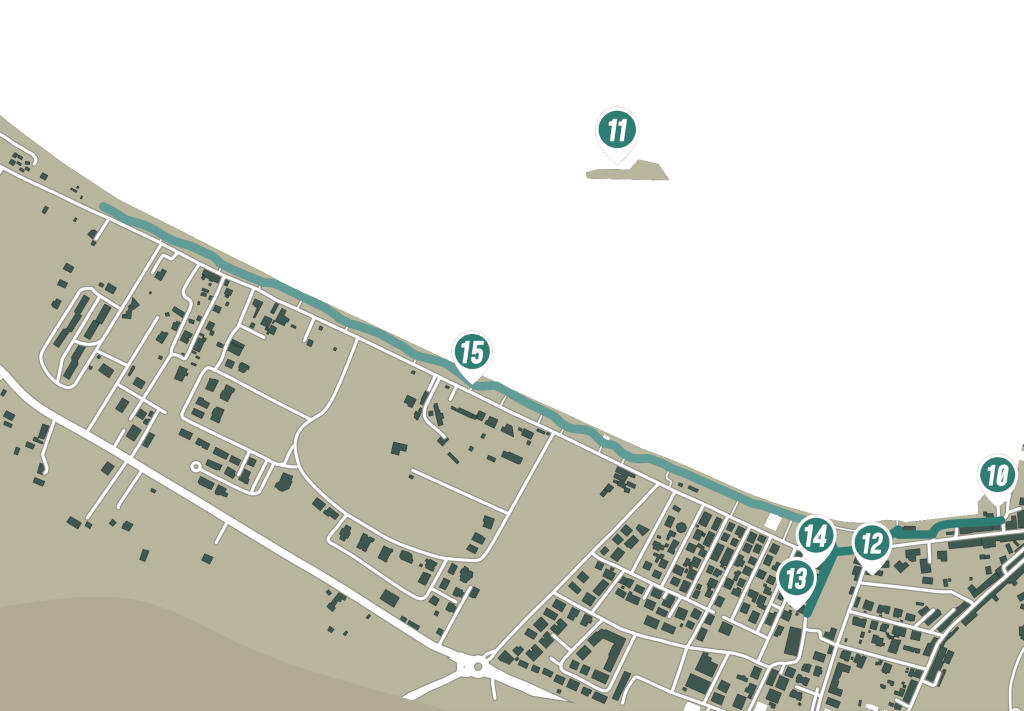- admin
- Nov, 08, 2024
- Touristic routers
- Commenti disabilitati su The Lakeside Promenade
The Lungolago di Capodimonte, which is about 2 km long, is the perfect spot for relaxation and fun. It stretches along a beautiful black volcanic sand beach and features large green spaces. During the summer, you can enjoy various musical and sporting events, while the pedestrian avenues are great for walking and biking. Plus, there are plenty of bars and restaurants to enhance your experience, blending beach life with delicious food.

10. The Port
The tourist port, perfectly equipped for mooring pleasure boats, consists of two arms that shield it from the wind, making it particularly suitable for this purpose. You can request a berth assignment by contacting the municipal offices. From the small port, tourist ferries set sail, offering short cruises on the lake that circumnavigate the two islands, Bisentina and Martana. Guided tours of Bisentina, which is now open to the public, are also available. This experience is not to be missed if you want to fully appreciate the beauty of Lake Bolsena… ‘sailing is believing’
11. Bisentina Island
Bisentina Island, along with Martana, boasts a rich history that dates back to the Etruscans and has experienced significant developments during the Middle Ages and the Renaissance. It served as an important fortress and prison, and under the Farnese family, it transformed into a sacred site known as a “fanum farnesianum,” featuring chapels and oratories dedicated to the family. During the Renaissance, Ranuccio III dei Farnese and the Franciscan Friars Minor turned it into a small Holy Land, enhancing it with sacred paths reminiscent of Mount Tabor and Golgotha. The island was further beautified through the efforts of Cardinal Alessandro Farnese. Today, while the island is privately owned, visitors can admire its beauty through boat trips and guided tours.
12. The Museum of Navigation
Capodimonte, with its unique position and urban layout that extends into the lake like a grand ship, is the perfect location for the Museum of Navigation in Inland Waters. This museum offers visitors a chance to explore the various forms, environments, and specific needs of navigation on lakes and rivers. It’s truly a “dive” into the world of galleys, galleots, tartanes, feluccas, lenunculi, caudicarie, navicelli, scafe, and battane. Additionally, the museum houses a prehistoric pirogue discovered near Bisentina Island, allowing us to connect with the incredible story of one of our ancestors’ boats that once graced the waters of Capodimonte.
13. The Cascina
The impressive Cascina building, currently undergoing restoration, is one of the oldest structures in Capodimonte, alongside Palazzo Farnese. Originally serving as the stables for the Rocca, it derives its name from the traditions of the Duchy of the North. It is believed to have been expanded when the Farnese family established themselves in the Po Valley with the Duchy of Parma and Piacenza in 1545. The building once functioned as a warehouse for grain, oil, wine, and dairy products, which were then sent to the Duchy. After years of neglect, the Municipality began restoring the Cascina in 2000, with the goal of transforming it into a cultural center featuring conference rooms, exhibition spaces, and a library. Today, it hosts a variety of artistic, musical, and theatrical events in a truly unique setting.
14. Church of San Rocco
The small Church of San Rocco, on Viale Regina Margherita in Capodimonte, is an important historical and religious site dedicated to the town’s patron saint. It was built in 1838 to thank the saint for protecting the town during a cholera outbreak. The church, shaped like a Greek cross, has an altarpiece by artist Luigi Cochetti showing one of the saint’s miracles. With its beautiful frescoes and decorations, the church is a symbol of local faith, celebrated every year on August 15th and 16th with processions and fireworks.
15. The Lakeside Promenade
The promenade, known as “le pioppe” in the Capodimonte dialect, is approximately 2 km long and serves as a recreational area along the black volcanic sand beach, interspersed with green spaces and framed by a charming row of plane trees from the 1930s. The wide pedestrian walkways and well-maintained green areas make the place suitable for walking or cycling. Bars, kiosks, restaurants, and pizzerias enhance the experience with a quality gastronomic offering.